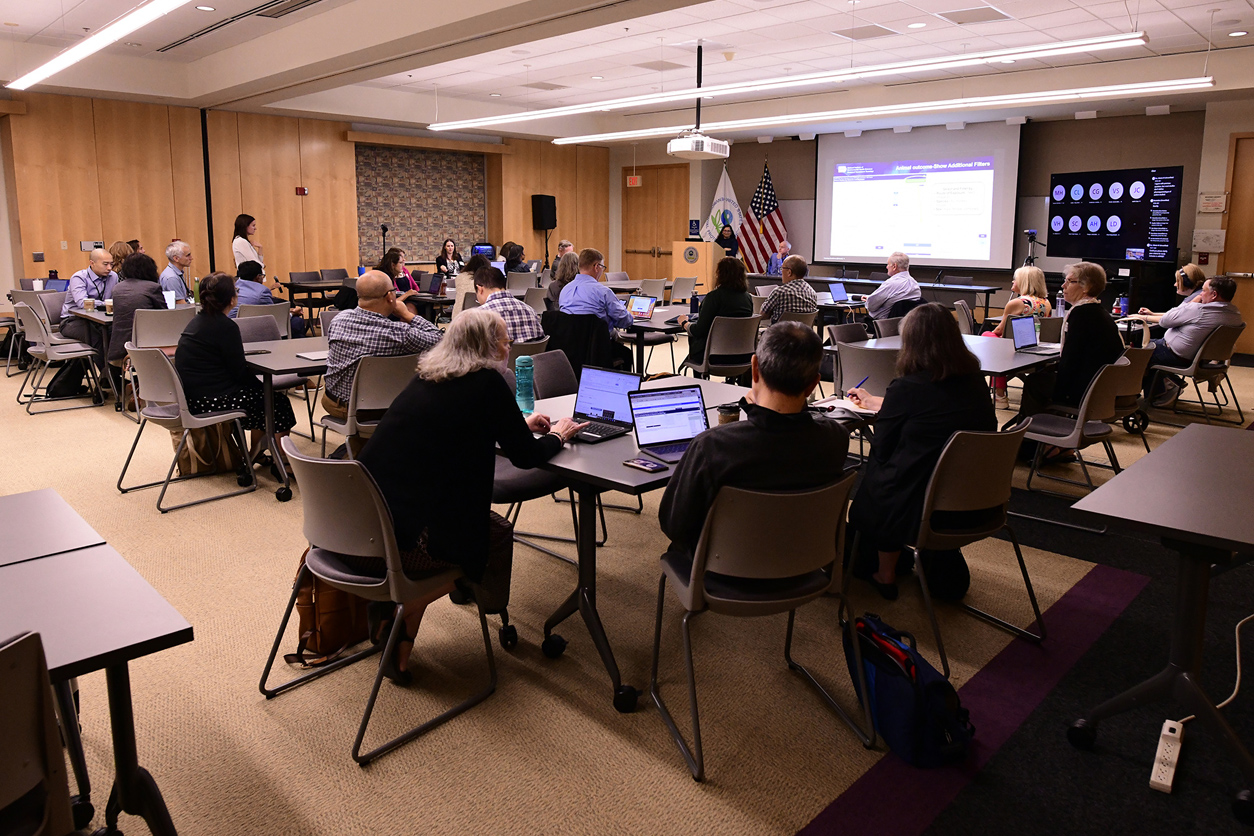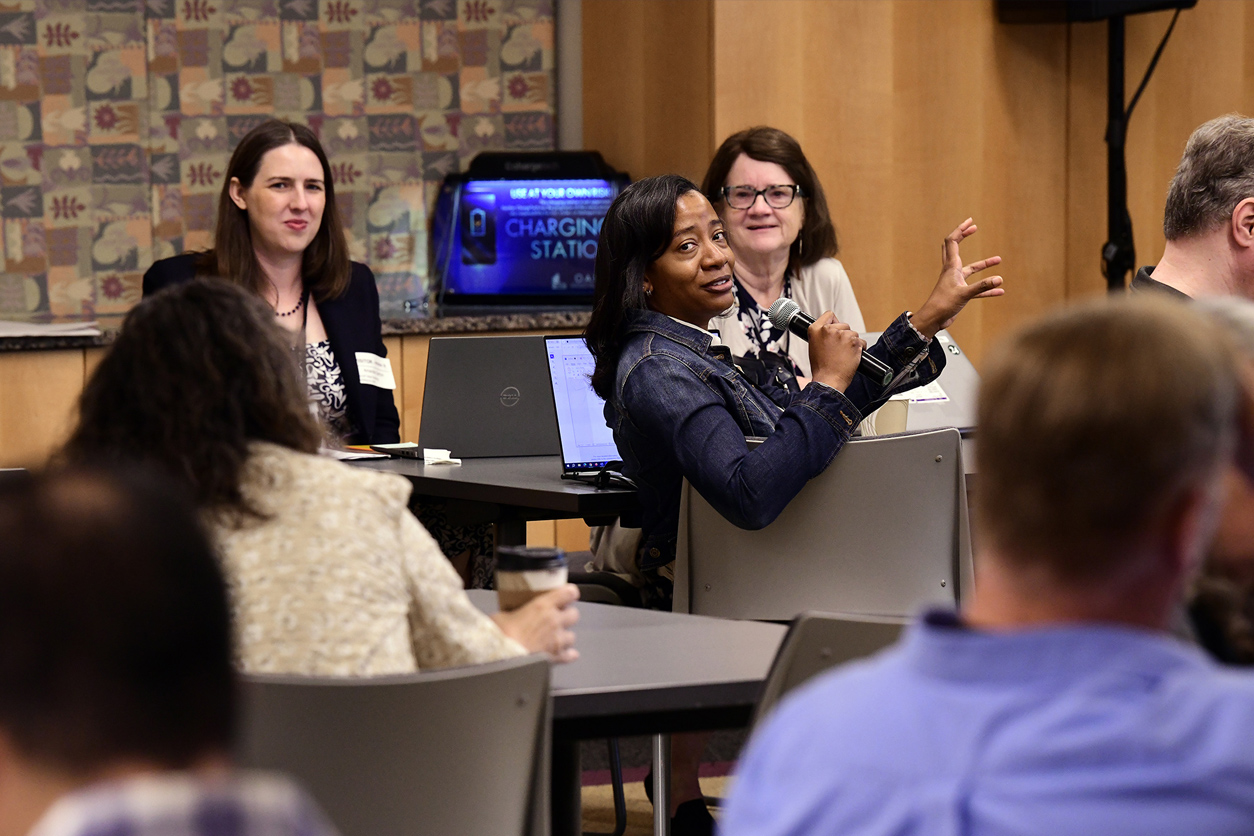Researchers, physicians, autism advocacy groups, and community members gathered Sept. 5-6 to provide feedback on a new approach for understanding research on autism spectrum disorder (ASD) and environmental exposures. Engaging the community as the tool is developed is critical to success because the new web-based tool for autism research and environment (aWARE) is intended to serve as a comprehensive and accessible resource on ASD for both researchers and the public.
“Ultimately, we hope this tool is going to help us develop a better understanding of the biologic processes underlying autism and the co-occurring conditions,” said Cindy Lawler, Ph.D., who leads the Genes, Environment, and Health Branch at NIEHS. “We think that can inform better identification, treatments, and services to improve the lives of individuals with autism.”
The NIEHS Division of Extramural Research and Training (DERT) and Division of Translational Toxicology (DTT), which provided technical support, collaborated to develop the tool.
Engaging the community
NIEHS created aWARE using an informatics approach called systematic evidence mapping to identify and categorize scientific literature to help scientists and policymakers use all available research to inform decisions and future research questions.
“Systematic evidence mapping is about making data more accessible,” said Andrew Rooney, Ph.D., who leads the Integrative Health Assessments Branch within DTT. “The strength is using this visual presentation to aid in understanding. It provides an interactive and user-driven format.”
The beta version of the aWARE tool used at the workshop to get feedback from the autism community included example figures showing research mapped by the exposures and outcomes studied.

Testing the tool
During the workshop, Anisha Singh, Ph.D., a DTT postdoctoral research fellow, demonstrated the capabilities of aWARE. Workshop organizers then asked participants to test the tool and consider what they learned from using the resource, how they could imagine using the tool in the future, what would make them more likely to use aWARE once it is fully operational, and to report any obstacles they encountered.
The following participants who tested aWARE discussed specific use cases.
- Jeff Day, Ph.D., a member of the Duke Autism Center of Excellence Community Engagement Advisory Board, searched the catalog for papers that would shed light on a potential link between sleep and ASD and pesticide exposure and ASD.
- Alycia Halladay, Ph.D., chief science officer at the Autism Science Foundation, used the catalog to find studies on toxicant exposure and ASD and to learn which funding agencies support such work.
- Dan Campbell, Ph.D., an assistant professor of pediatrics and human development at Michigan State University, explored the differences in exposure category studies between humans and animal models, showing more air pollution and metals studies in humans versus more studies of pesticides in animal models.

Input from the autism community through the workshop and previous listening sessions are essential to NIEHS plans to continue improving aWARE. Annual updates after the official launch also are planned.
“We want to make sure that in five years, we’re able to capture new areas of research and the answers to previously unanswerable questions,” said Lawler.
(Susan Cosier is a contract writer for the NIEHS Office of Communications and Public Liaison.)
Source link
factor.niehs.nih.gov

